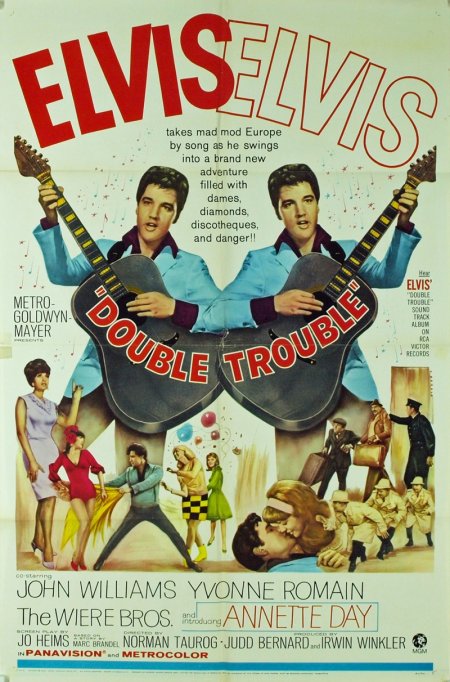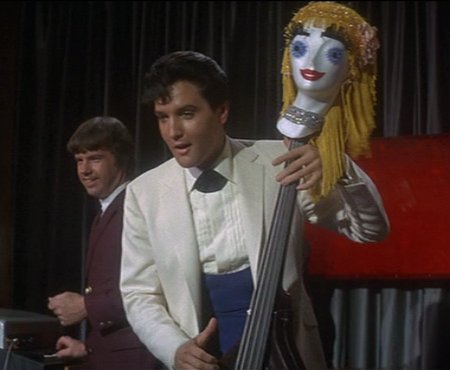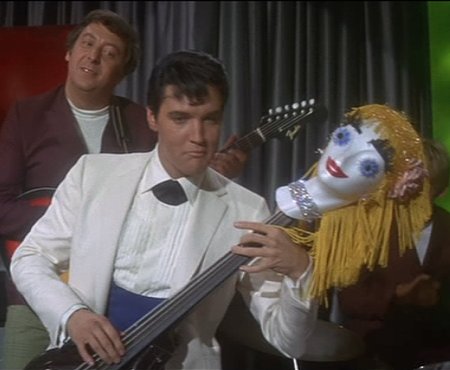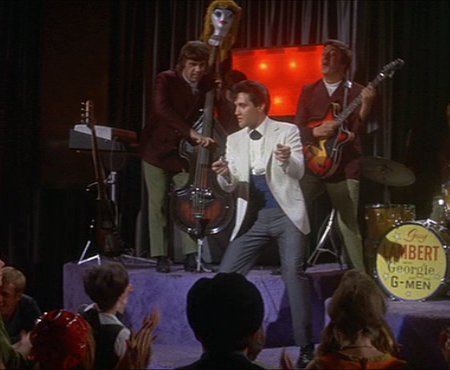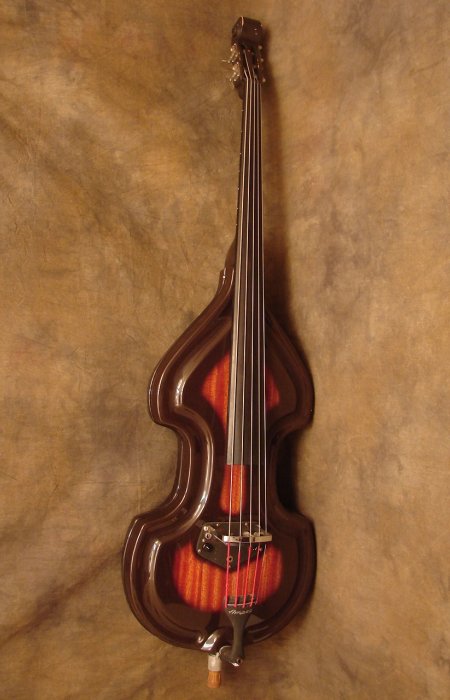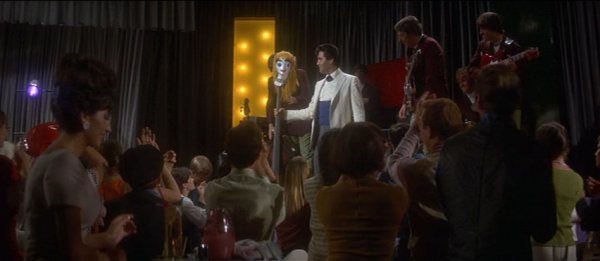 |
1960s Ampeg Baby Bass
The 1967 release of MGM's Double Trouble was Elvis' twenty-fourth film and his eighth for MGM. Set in Europe Elvis was cast as the singer of a band pursued by a host of bumbling diamond smugglers, detectives and also hit men bent on killing the love interest in the film played by Annette Day in her only film appearance. Production started at the end of June in 1966 with uninspiring soundtrack sessions that likely further added Elvis' growing reluctance to do these formulaic movies and sub par songs that would about reach its peak by the time of Clambake.
Incidentally, promotional materials for the film actually featured a guitar used in Clambake, since in Double Trouble Elvis didn't use any. However, in one of the opening scenes of the film while performing in a club set in London, Elvis is seen briefly playing a 4-String Ampeg Baby Bass used by one of his onscreen bandmates.
Elvis, Scotty and Bill were no strangers to the problems of transporting an upright bass and the lack of volume it often provided in the situations they were required to use it in. They had been dealing with it since the beginning when they took turns sitting with Bill's in the backseat of a 53 Chevy Belair. In answer to the same problems faced by countless others, manufacturers were introducing thinner solid and hollow body full scale electric basses, some called stick basses. By then though, Fender's Precision Bass had been introduced and became the instrument of choice for many bass players. Bill got one and eventually so would Elvis.
Several manufacturers experimented with electric models as early as the 1930s and '40s, including Gibson. Though not an upright in the traditional sense, they made a very small number of fretted electric basses with a longer scale length than Fender's more suited for upright playing. However they would not mass produce an electric bass either until the introduction of the EB-1 in 1953.*
In 1962 Ampeg introduced their Baby Bass, an electric upright bass with a full-size wooden neck and a cello-sized Uvex plastic body. The design was purchased from Zorko, re-engineered by Jess Oliver, and manufactured in a corner of Ampeg's Linden, NJ factory. Normally in the early 1960s Ampeg-branded guitars and basses were produced by Burns of London until around 1965 and the purchase of Burns by Baldwin, but the Baby Bass launched their own distinctive lines made to complement their amplifiers. They came in 4 and 5 string versions and appeared in Ampeg's price list until about 1970.**
Filming completed in August and Elvis started on Easy Come, Easy Go which would actually be finished and released before the release of Double Trouble. An interesting side note, one of the diamond smugglers was played by Norman Rossington, the only actor with the unique distinction of appearing in both an Elvis and a Beatle film, A Hard Days Night. This page added August 15, 2010 is part of the section The Movie Guitars of Elvis Presley.
*courtesy
National Music Museum, The University of South Dakota.
Special thanks to Bill in the AEK Lounge for his help and
to Jeff and
RocknRoll Vintage Inc. in Chicago, a great source of vintage and
used guitars for sale, for the use of their photos.
|
|
All photos on this site (that we didn't borrow) unless otherwise indicated are the property of either Scotty Moore or James V. Roy and unauthorized use or reproduction is prohibited. |
